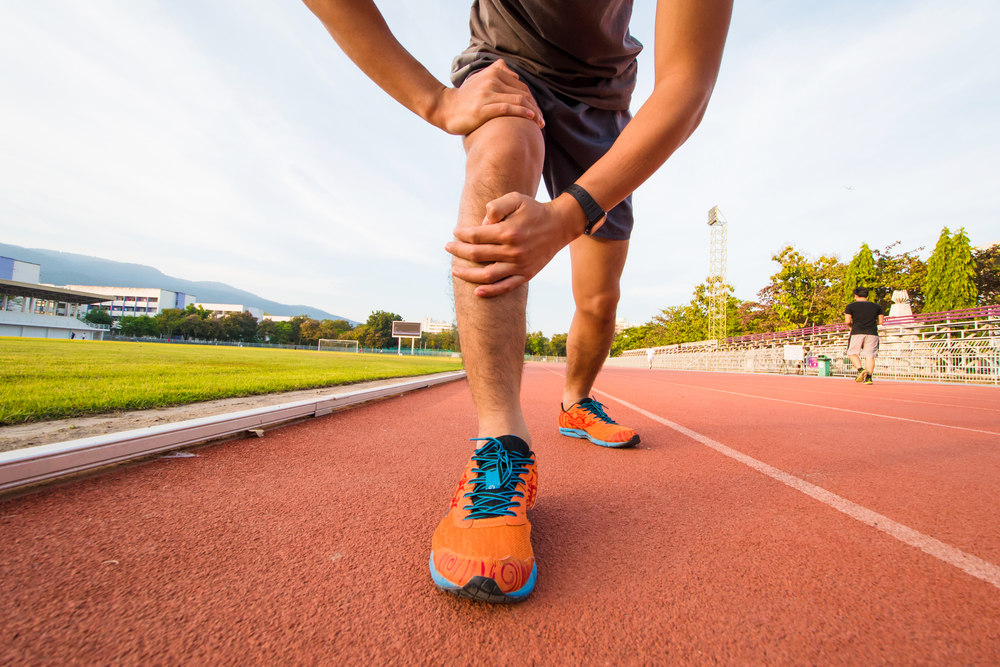
If you’re a runner, then you might be familiar with some of the possible injuries that can occur with this high-impact sport. From bone spurs and plantar fasciitis to Achilles tendonitis and sprains and strains, setbacks like these can be common if proper precautions aren’t taken.
Another common injury associated with running is runner’s knee – also known as chondromalacia patallae, or iliotibial band syndrome. It can also be called patellofemoral malalignment. It’s highly dependent upon what is causing the knee pain.
What is Runner’s Knee?
Runner’s knee typically presents itself as pain that is localized around the kneecap, or patella. Usually, this type of pain happens while you’re moving or have been sedentary for a period of time. With that being said, running isn’t the only activity where pain in the knee might occur.
Anything from jumping and biking to walking and hiking can cause this condition to happen. One might hear some creaking or grinding sounds in the affected knee, especially while moving up and down stairs or getting up from a squat or lunge position. As always, if you are unsure of pain or injury, consult with your doctor to confirm the diagnosis.
Treatment Process
Once your doctor confirms that you have runner’s knee (through a process of discussing your health history, injury status, movement abilities, pain level, physical examinations, and possible x-rays), the next thing to discuss is treatment. After all, you want to get back to running soon– and in a safe way. There are a few different ways that treatment can be approached in regards to getting runner’s knee to dissipate. These include – but aren’t limited to – knee wraps, medicine, strength/mobility/flexibility exercises, elevation, ice packs, and rest.
One of the most prominent treatments for runner’s knee is RICE – an acronym that stands for rest, ice, compression, and elevation. Sometimes this method is also combined with anti-inflammatories, but you’ll need to discuss that with your doctor first and foremost.
Prevention of Runner’s Knee
When you are on the right track to feeling better after your runner’s knee diagnosis, you’ll certainly want to ensure that you can get back to running as quickly as possible….and safely! Before you start pounding the pavement, there are some steps that you can take to prevent this injury from occurring again. These all come from the American Academy of Orthopaedic Surgeons. They are general recommendations. However, always speak with your doctor if you need a different plan of action.
One of the top things the AAOS recommends in regards to runner’s knee prevention is to stretch. This can be interpreted broadly. But you’ll want to incorporate a dynamic warmup into your routine before you begin your run (think high knees, butt kicks, walking lunges, etc.) and then ensure you have a proper cool down once you’re done logging your miles – followed by a good stretch session. This doesn’t have to last for a long time; even 5-10 minutes of a post-run stretch can be beneficial.
Secondly, make sure that you are running with the correct form! This can be difficult since we can’t see ourselves run. But you can focus on some technique tips to help you out. One of the main factors to focus on is ensuring your core stays engaged as you run. If you lose the engagement, you can round over or lean too far backward as you run. This can cause multiple injuries and imbalances. If possible, try not to run on concrete; instead, find a softer surface such as dirt or grass, and if running downhill, run side to side instead of straight down.
Third, build your miles back up slowly. This can be a challenge, especially if you are used to running for long distances, especially pre-injury. However, jumping back into running several miles after recovering from runner’s knee can be detrimental and irritate. Build your miles back up slowly!
Lastly, ensure that you are wearing the right shoes for running! You don’t want to wear a cross-trainer or lifter for an activity like running, and vice versa. If you are not sure which type of shoe is best for you, speak with a local specialist at a sporting goods store or running store near you. Typically they can watch you walk, learn about your running history, and even check the wear on the bottom of your shoes.
Remember, always speak to your doctor if you have pain while running; while runner’s knee can be somewhat easy to prevent, it can set you back in your training regimen if not taken care of appropriately. Pay attention to your body, and give it the quality care it needs!
